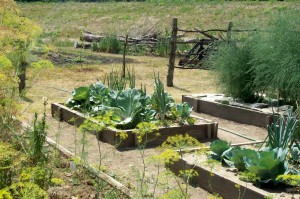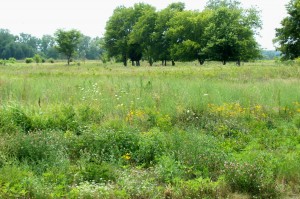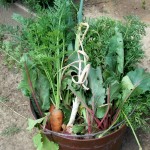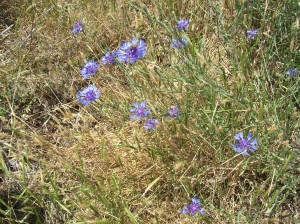28 June, Thursday
104 degrees F
Sunny, Light S winds
Weeding and watering early this morning, the jardin is struggling in the oppressive heat. Spring in the bottom land of the Mississippi River saw very little rain and has made the challenge of gardening in these extreme conditions a real struggle. Much time has been spent watering and nurturing the last of the spring harvests and proceeding cautiously with planting for the summer ahead. The garden managed to produce fair amounts of asparagus, beet, lettuce, radish, and spinach in May and early June. Our gooseberries, peas, and later sowing of lettuce and radish were causalities of the constant climbing temperatures and dryness. Our seed germination rates tumble as the temperatures rise. As an example, seeds of lettuce rarely germinate when temperatures reach 80 degrees. As a precaution, I have decided to leave two White Doyenne heirloom pear trees heeled in a garden bed, to be held until the fall when cooler air returns and they can be safely planted in our small growing orchard. Currently the red onions and cabbages are reaching their prime, and we scramble to make sure the remaining plants have enough water to reach the completion of their season. Work now focuses on nurturing the new growth of beans, cucumber, melons, and squash in these unrelenting conditions.
Suffering the travails of this climate does not dim the beauty of the land and helps one accept the notion of each year progressing at its own tempo. Life and the garden will continue to move through the maze of days, no matter our desires and participation. The season’s cycle dictates whether each plant thrives or declines, depending on the moisture and temperature of the year’s rhythm. And so it has ever been, in spite of the hardships of this region’s climate, the inherent quality of the land was much remarked upon by early visitors to the area. Reading early accounts of the Illinois Country, one is struck by the universal admiration of the beauty and harvests of the land.
André Penicaut, in service as a carpenter of the King’s ships, ascended the Mississippi from the French outposts of the Gulf of Mexico in 1711, and seven years before the founding of New Orleans wrote: “This region . . . is one of the finest of all of Louisiana and possesses some of the richest soil. There is wheat that is as good as French wheat, and there are all sorts of vegetables, tubers, and herbs. . . “ Continuing, he remarks, “This country is one of the most beautiful in all Louisiana. Every kind of grain and vegetables are produced here in the greatest abundance. It is in this country that you may behold the most magnificent prairies in the world.”
 Traveling through the Illinois Country, one cannot but see the blessings of the land and be comforted by it. As we work to fulfill the promise of this land, one can only reflect upon those that first settled here. We echo the prayers of those who have preceded us and struggled under adverse conditions. We remain ever hopeful, that a new day will bring much needed relief in temperature and precipitation to allow us to cultivate and share in the bounty of the Illinois Country.
Traveling through the Illinois Country, one cannot but see the blessings of the land and be comforted by it. As we work to fulfill the promise of this land, one can only reflect upon those that first settled here. We echo the prayers of those who have preceded us and struggled under adverse conditions. We remain ever hopeful, that a new day will bring much needed relief in temperature and precipitation to allow us to cultivate and share in the bounty of the Illinois Country.
 On Saturday, July 7, 10 AM-Noon, you are invited to the Fort de Chartres Jardin Potager and explore our early summer heirloom garden. I will have six or seven varieties of heirloom flower and herb seeds harvested from the jardin available for those interested. Please check the Evénements au Fort de Chartres page of this blog for information. Look for newly posted recipes for Cabbage and Apples and Carrot Pudding on the Recettes page.
On Saturday, July 7, 10 AM-Noon, you are invited to the Fort de Chartres Jardin Potager and explore our early summer heirloom garden. I will have six or seven varieties of heirloom flower and herb seeds harvested from the jardin available for those interested. Please check the Evénements au Fort de Chartres page of this blog for information. Look for newly posted recipes for Cabbage and Apples and Carrot Pudding on the Recettes page.

Leave a Reply